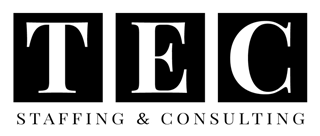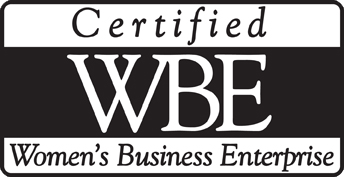Bringing Teams Together: Activities to Improve Collaboration
Bringing Teams Together: Activities to Improve Collaboration
When new team members, especially temporary or contract workers, join an existing team, fostering a sense of cohesion can make a big difference in productivity and morale. Engaging in shared team-building activities builds trust, enhances communication, and helps align everyone with the company’s goals.
Consider incorporating activities that focus on building relationships, solving problems together, and aligning around shared goals. Strong connections within teams lead to higher productivity and a more unified approach to work.
Communication and Connection Exercises
To foster vital communication among team members, managers can encourage activities that support personal sharing and collaboration, such as icebreakers or storytelling exercises. One way to achieve this is by proposing thoughtful icebreaker exercises, such as having each team member answer unique questions about their interests or hobbies, playing two truths and a lie, or having partners interview each other.
Another effective method is to suggest collaborative storytelling activities where team members build a story together verbally, one line at a time. Improving communication skills is not the only benefit of practicing creativity and teamwork, but it also fosters an environment that encourages collaboration and innovation. For more creative groups, a team drawing exercise, where each person adds to a collective picture, can be an enjoyable activity that fosters collaboration and helps break down barriers.
In addition to these activities, personality and work style tests such as Myers-Briggs, DISC, or Team Dimensions can help team members better understand each other's differences and preferences. By becoming more self-aware and aware of others, team members can improve their communication and collaboration skills, leading to a more productive and positive work environment.
Trust and Problem-Solving Activities
Group trust exercises can be a practical approach to establishing trust and fostering teamwork among colleagues. One such exercise is the trust fall, where team members fall back into their colleagues' arms. This activity helps to build trust and confidence in others, demonstrating a willingness to rely on and support one another. Spotting activities, where teammates ensure others are safely climbing or crossing obstacles, can also establish reliance and support.
Collaborative problem-solving activities are another effective way to encourage teamwork and communication. Puzzles, escape rooms, or strategy games that require diverse input and cooperation from the entire team to solve or win can be challenging yet rewarding experiences. These activities help team members develop critical thinking skills, improve communication, and foster trust through shared problem-solving experiences.
Outdoor ropes courses with elements of calculated risk can also effectively foster trust and teamwork. These courses are designed to challenge team members physically and mentally, requiring them to work together to overcome obstacles and complete tasks. Through shared experiences and challenges, team members can develop a more profound sense of trust and reliance on one another, ultimately leading to a more cohesive and effective team.
Fostering Engagement and Collaboration
One of the most effective ways to promote active participation and collaboration among team members is through friendly group competitions or contests. Such activities could include large-scale cooking challenges, massive art projects, or tower-building competitions with limited resources. Multi-stage experiences, such as office-wide scavenger hunts, Amazing Races, or interactive murder mysteries, are also known to inspire camaraderie and teamwork through shared experiences.
Another approach to encouraging collaboration is through timed group design activities where teams must creatively brainstorm solutions to quirky problems they unveil one stage at a time. It has been observed that working under pressure often brings out the best ideas from teams.
By implementing these strategies, businesses, and organizations can create a culture of collaboration and foster an environment of creativity and innovation.
Aligning Around Shared Mission and Goals
Creating a shared mission and aligning goals is fundamental to any group's success. When temporary workers are brought together, it becomes even more important to align them around a collective purpose. One way to achieve this is by guiding the group to create a mission statement that reflects their shared values, norms, and performance goals.
To foster a sense of unity and find common ground, you can suggest vision board exercises where members express their personal and professional hopes. This can help identify shared aspirations, values, and goals, which can be incorporated into the group's mission statement.
It is also crucial to keep track of progress on measurable group goals to ensure that the team remains motivated and on track to achieve their objectives. By visually tracking progress, group members can see how their efforts contribute to the team's overall success, which can further enhance their sense of unity and motivation.
Strengthening Remote Member Bonds
In today's business environment, remote work has become increasingly common, and teams often include members working from different locations. Maintaining a strong sense of camaraderie and collaboration among team members is an essential aspect of building a successful team. Virtual team-building activities can be organized to achieve this, including virtual escape rooms, murder mystery games, and show-and-tell activities over video calls. These interactive activities create an environment that is both engaging and fun, allowing team members to connect on a personal level.
It is also essential to ensure remote team members feel included and valued. One effective way to achieve this is by delivering care packages, swag bags, or snacks to long-distance teammates. These small gestures go a long way in demonstrating that their contributions to the team are valued and appreciated. Additionally, rotating weekly virtual hangouts focused on non-work topics can help build stronger relationships among team members. These hangouts can include virtual happy hours, book clubs, or even cooking classes.
Multiplayer online games are another way to connect distributed workers. Playing games together helps team members to unwind and have fun while still engaging with each other. It is essential to remember that social time is critical for remote workers, and investing in team-building activities can create a positive and productive work environment.
Final Thoughts
When teams have the opportunity to participate in shared experiences and align around joint missions and goals, it creates a consistent foundation for team building. These experiences promote effective communication, problem-solving, and bonding among team members.
When team members are united, they are more likely to achieve their goals and execute tasks successfully. Therefore, it is essential to prioritize team building and establish a shared sense of purpose and direction to foster a collaborative and productive work environment.






